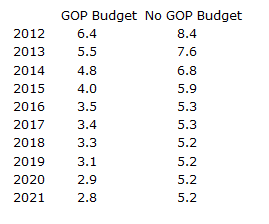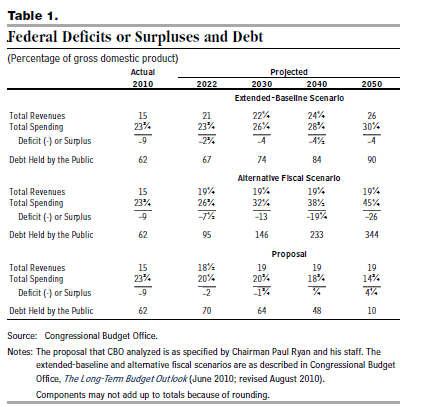I vividly remember being called out on strikes in a Little League Baseball game when I was 10. As I plead my case that the last pitch was clearly a ball, the umpire said something I remember like it was yesterday.
Son. It is nothing until I call it. Go sit down.
And so it is with the Congressional Budget Office (CBO), the official umpire of Congressional legislation. They render judgments on what plans and eventually bills written into legislative language will do. They focus on the financial ramifications of legislation, but also assess the effect of laws on the number of uninsured persons, for example. The only certainty is that everyone is mad at the CBO at some point, and people are inconsistent in how they view CBO: sometimes provider of truth, while at other times, hopelessly misguided.
One of the favorite tactics of opponents of the ACA was to cast aspersions on the forecasts put forward by CBO. They didn’t like that their score of the ACA allowed proponents to argue the law could be implemented and cover 32 Million more people while reducing the federal budget deficit over 10 years. Some attacked the credibility of the CBO, while others said that politicians wouldn’t follow through with hard decisions in the out years, rendering the judgment of CBO misleading.
Yesterday on twitter, several noted that the CBO March 2011 Medicare baseline projections forecast a growth rate in Medicare over the period 2015-21 that is lower than that required by the ACA to trigger the the Independent Payment Advisory Board (IPAB) to make recommendations to slow the growth of the limited parts of the Medicare program to which IPAB applies prior to 2021 (won’t apply to hospitals, for example, until 2022). This was captured in a footnote (footnote d on page 2 of 5 of above link); the point being advanced by those opposed to IPAB was that since CBO was not forecasting a spending reduction due to the work of the IPAB, that panel created by the ACA could be repealed without increasing the deficit over the 10 year window that the CBO uses for scoring. For opponents of the IPAB, the CBO was misguided in March 2010 when they forecast savings due to the work of the panel, while the most recent judgment of CBO was evidence that the IPAB could be repealed without having to find a revenue offset. It was the same CBO, using the same methods that rendered their best judgment given the data they had at the time. The only thing that changed was who liked the answer they gave. The CBO gives, and the CBO takes away.
You can rest assured that some advocates of the ACA (who can be expected to mostly be reflexive opponents of the health policy components of Rep. Ryan’s budget) will have similarly situation-specific views of the work of CBO depending upon the argument they wish to forward. For example, it has already been said about Rep. Ryan’s Medicare voucher plan that future Congresses will not follow through on the amount of the voucher as specified by Rep. Ryan, because it will mean that people born in 1956 will have lots better Medicare benefits than those born in 1957. This is the same argument made by opponents of the ACA in a variety of contexts: politicians in the future won’t make the tough decisions, and so any CBO judgment on the ACA is misleading. It is nearly an iron law of health policy that the hard things in my plan are easy to implement, while the hard parts of your plan are impossible. In the midst of this inconsistency, sits the CBO.
The Heritage Foundation provided some analyses of Rep. Ryan’s budget that sound quite impressive. They use so-called dynamic scoring methods to simulate the effect of tax reductions on economic growth, employment, tax receipts and therefore the revenue side of deficit reduction. Their assessments have been noted as being a bit rosy. For example, the Heritage Analysis of Ryan’s budget projects that unemployment will be as follows (GOP budget) as compared to the No GOP budget default (chart via Dave Weigel):
Thus, Heritage is forecasting unemployment rates that seem implausibly low, at least by historical standards. But, those are the judgments of an interested organization. That doesn’t make them worthless, it just makes me want to know ‘what does the CBO think?’ It is important to point out that CBO has not scored the Ryan Budget proposal, because it has not been written into legislative language. As CBO Director Doug Elmendorf’s letter of April 5, 2011 to Rep. Ryan says:
CBO has not reviewed legislative language for your proposal, so this analysis does not represent a cost estimate for legislation that might implement the proposal. Rather, it is an assessment of the broad, long-term budgetary impacts of the proposal, with results spanning several decades and measured as a share of GDP. It is therefore quite different from a cost estimate for legislation, which would require much more detailed analysis, focus on the first 10 years, and be based on more recent baseline projections.
The most speculative aspect of the CBO assessment of the Ryan proposal is the assumption of the amount of revenue that the tax code will bring in. CBO has assumed, on the direction of Rep. Ryan’s staff, to assume that in 2022 the tax code will produce 18.5% of GDP, rising to 19% of GDP by 2030 and remaining static at 19% of GDP through 2050. Keep in mind that last year the tax code produced 15% of GDP in tax receipts. So, the deficit reduction claims about Rep. Ryan’s budget hinge on both the projection of spending reductions which have uncertainty but are likely fairly solid given the equivocations in the CBO letter, and an assumption that the proportion of the economy that will be collected in taxes will rise quite a bit in the next decade. This claim is highly speculative, and is an assumption in the CBO letter. Rep. Ryan has proposed a policy in his budget that alters the tax code to reduce the top marginal tax rates, and reduce the number of rate bands. As of yet, CBO has rendered no judgment about how much revenue that change in tax policy will actually produce. Table 1 from the CBO letter of April 5, 2011 to Rep. Ryan lays this out:
You can see under the actual column, that the current tax code brought in 15% of GDP in taxes last year, and that both CBO scenarios and Rep. Ryan’s proposal would increase the taxes received substantially a decade from now. Ryan’s claim is that a reduction in top marginal rates will greatly increase the total receipt of taxes from 15% of GDP in 2010 to 19% of GDP by 2030. CBO has assumed that to be the case for the purpose of providing this assessment of his policy, but eventually CBO will have to produce their own analysis.
For now, great credit to Rep. Ryan for laying out a budget, and especially identifying a set of spending reductions that can be debated and discussed (indeed, this budget is the blogger full employment act of 2011!). However, the next steps are the most important. The House Budget Committee must mark a bill and commit to specific legislative language on both the tax and spending side. Then the CBO and the Joint Committee on Taxation must score the actual legislative language of the proposal, all the gory details (I wonder how long it will be?). Will the tax code specified by the budget committee bring in 19% of GDP according to the CBO? Only time will tell. And only after CBO has spoken can we fully evaluate Rep. Ryan’s budget, and the health policy proposals contained therein. To paraphrase the Little League umpire I cannot get out of my mind, it is nothing until the CBO calls it.
Update: fixed a typo/wrong word use.



